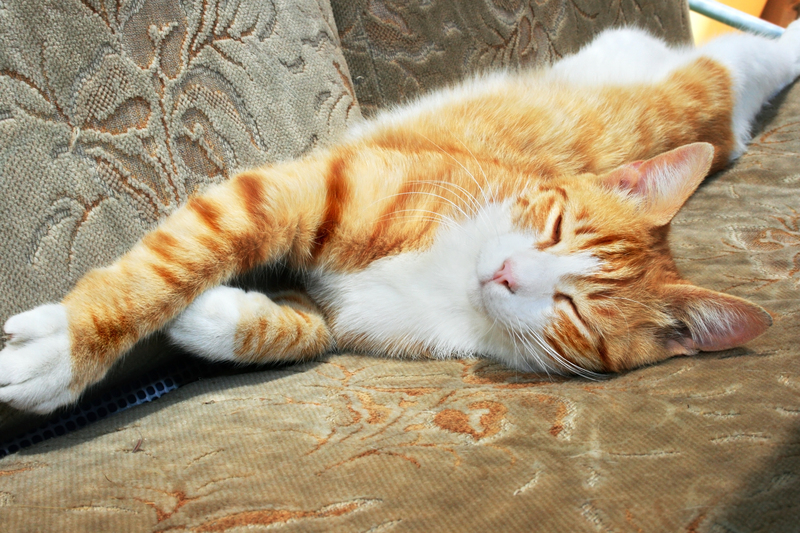How to Freshen Up Your Space by Removing Damp Odors
Posted on 25/09/2025
How to Freshen Up Your Space by Removing Damp Odors
Are you struggling with damp odors in your home or office? That musty smell is more than a nuisance; it can signal underlying moisture problems and may impact your overall well-being. Luckily, learning how to freshen up your space by removing damp odors can transform your environment into a healthier, more inviting place. In this comprehensive guide, we'll explore proven strategies to eliminate musty smells, prevent their return, and infuse your living areas with freshness.
Understanding Damp Odors: What Causes Them?
Before diving into solutions, it's essential to understand what causes those unwelcome moist, earthy scents. Damp odors often stem from excess moisture in the environment. This moisture provides an ideal breeding ground for mold, mildew, and bacteria -- the chief offenders behind the stale, unpleasant smell.
- Mold and mildew: These fungi thrive in humid spaces and emit volatile organic compounds (VOCs) that create a musty odor.
- Poor ventilation: Without adequate airflow, humidity and dampness linger, leading to stale air.
- Water leaks: Hidden leaks from pipes, ceilings, or walls are common sources of persistent dampness.
- Condensation: Especially on windows and walls, which can fuel damp spots and mustiness.
Addressing the root cause is vital to freshening up your home and banishing unwelcome scents for good.

How to Detect Sources of Damp Smells
Pinpointing the origin of damp odors is the first step to effective removal. Here's how to investigate:
- Sniff test: Walk slowly through each room and note where the musty smell grows strongest.
- Visual inspection: Look for water stains, discoloration, peeling paint, or patches of mold on walls, ceilings, and floors.
- Check hidden spaces: Inspect basements, crawl spaces, closets, attics, under sinks, behind furniture, and around windows and doors.
- Look for condensation: Windows, pipes, and cold walls may show beads of water--a sign of excess moisture.
- Monitor humidity: Use a hygrometer to test relative humidity; levels above 60% often lead to odors.
When Should You Call a Professional?
If you find widespread mold, extensive water damage, or if the source seems unmanageable, it's wise to consult with a remediation expert. For most household problems, however, you can use the following DIY techniques to remove damp odors and restore freshness.
Step-by-Step Guide: Removing Damp Odors from Your Space
Ready to reclaim clean, revitalizing air? Here's a comprehensive process to sanitize your environment:
1. Find and Fix the Moisture Problem
- Repair leaks: Fix dripping faucets, leaking pipes, cracked roof tiles, or damaged window seals immediately.
- Improve drainage: Direct rainwater away from the building and ensure gutters aren't clogged.
- Seal cracks: Fill any gaps in walls, floors, and foundation that allow water seepage.
- Reduce condensation: Insulate pipes and improve window insulation if needed.
2. Increase Air Circulation
- Open windows and doors whenever possible to let fresh air in.
- Run ceiling fans and exhaust fans (especially in kitchens, bathrooms, and laundry areas).
- Add portable fans to stagnant corners or closets for better airflow.
3. Dehumidify the Air
- Use a dehumidifier: These devices pull moisture from the air, making the environment less hospitable for mold and mildew.
- Place moisture absorbers, such as silica gel, activated charcoal, or commercial desiccants, in problem areas like closets and basements.
- Inexpensive DIY option: Place bowls of baking soda or cat litter in musty locations. Both will help absorb excess humidity and scents.
4. Clean and Disinfect Affected Areas
-
Wash all surfaces: Scrub walls, floors, and hard furniture with a mix of warm water and mild detergent or white vinegar.
- Use a solution of 1 part bleach to 10 parts water for severe mold, but ensure adequate ventilation.
- Launder fabrics: Wash curtains, bedding, cushion covers, and other textiles in hot water with vinegar or baking soda for extra deodorizing power.
- Deep clean carpets and upholstery: Use a steam cleaner or professional service, as fabrics trap moisture and smells.
5. Remove Items That Can't Be Saved
- Severely moldy items or water-damaged furnishings should be safely discarded to prevent spores from spreading.
- If in doubt, err on the side of caution, especially for soft items like pillows, insulation, or warped wood.
6. Treat Musty Air and Restore Freshness
- Natural air fresheners: Simmer citrus peels, eucalyptus leaves, or cinnamon sticks to infuse air with pleasant scents without masking problems.
- Essential oils: Add drops of tea tree, lavender, lemon, or eucalyptus to a spray bottle with water and mist throughout the space.
- Ventilate after cleaning: Open windows and let sunlight in; UV rays naturally neutralize odors and kill bacteria.
Tip: Avoid overly chemical-based air fresheners, as they may only mask odors instead of removing damp smells at the source.
Best Products and Home Remedies for Eliminating Damp Smells
For persistent problems, certain products and home remedies can support your ongoing battle against musty odors:
- Dehumidifiers: Essential for basements, bathrooms, and closets to keep humidity in check.
- Moisture absorbers: Calcium chloride-based products draw moisture out of the air; available at most hardware stores.
- Sodium bicarbonate (baking soda): Sprinkle on carpets or place in bowls to neutralize odors naturally.
- White vinegar: Wipe down surfaces or fill a bowl and leave it in a room overnight to absorb lingering smells.
- Activated charcoal: Odorless and highly absorbent, it can deodorize closets, shoes, and small rooms.
Homemade Deodorizing Sprays
-
In a spray bottle, combine:
- 1 cup water
- 1-2 tablespoons white vinegar
- 5-10 drops of essential oil (lemon, lavender, or eucalyptus)
Long-Term Strategies: Preventing Damp Odors from Returning
Eliminating damp odors is only half the battle; prevention is key to maintaining a fresh, clean atmosphere. Here's how to ensure mustiness doesn't return:
Maintain Optimal Humidity Levels
- Monitor indoor humidity; keep it between 30-50%.
- Use exhaust fans when cooking, bathing, or washing clothes.
- Close windows and doors during humid weather or storms.
Regular Cleaning Routine
- Vacuum, dust, and launder soft furnishings at least once per month.
- Check for signs of moisture and mold quarterly, especially after heavy rain or snow.
Upgrade Ventilation
- Install or upgrade bathroom and kitchen fans.
- Consider air exchangers or whole-house dehumidifiers for persistent problems.
Inspect for Leaks Seasonally
- Check roofs, windows, basements, and plumbing for new leaks every season.
- Address issues quickly to prevent moisture buildup.
Waterproof and Seal
- Apply mold-inhibiting primers and waterproof paints to vulnerable areas.
- Seal tile grout, basement walls, and other porous materials regularly.
Freshening Up Frequently Affected Spaces
Some areas are particularly prone to damp smells and require extra care:
Basements and Cellars
- Use dehumidifiers continuously if needed.
- Store items on shelves rather than directly on the floor.
- Apply masonry sealant to foundation walls.
Bathrooms
- Always run the extractor fan during and after showers.
- Use mildew-resistant shower curtains and wash bath mats regularly.
- Wipe down tile and grout frequently with vinegar solution.
Kitchens
- Check under sinks for leaks and repair them promptly.
- Vent cooking steam outdoors whenever possible.
- Store food in airtight containers to prevent added humidity.
Closets and Wardrobes
- Don't overcrowd; allow air circulation between garments.
- Add moisture absorbers or small containers of baking soda.
- Avoid storing damp shoes or coats inside.
The Health Impact of Removing Damp Odors
Addressing damp smells does more than freshen your space--it also fosters a healthier home. Prolonged exposure to mold, mildew, and their airborne particles can cause:
- Respiratory irritations (coughing, sneezing, shortness of breath)
- Allergic reactions and aggravated asthma
- Skin and eye irritation
- Headaches and fatigue
By learning how to remove damp odors, you protect both your property and your family's well-being.

FAQs: Freshening Up Your Space by Removing Damp Odors
- What is the quickest way to get rid of musty smells?
Open windows, increase ventilation, use a dehumidifier, and clean surfaces with vinegar or baking soda. - How do I know if a smell is from mildew or mold?
Mold often produces a stronger, pungent odor and typically accompanies visible black, green, or white colony growth. Mildew usually appears as gray or white powdery spots. - Can air fresheners eliminate damp odors?
Chemical air fresheners only mask the smell. To truly remove it, you must target the underlying moisture source. - Is it safe to clean mold myself?
Small patches (under 10 square feet) are manageable with proper precautions. If you have allergies, respiratory issues, or a large infestation, hire a professional.
Conclusion: Make Your Space Inviting and Odor-Free
Dealing with damp odors doesn't have to be a never-ending struggle. By identifying sources, controlling moisture, and using effective cleaning strategies, you can freshen up your space and enjoy a welcoming, comfortable environment year-round.
Stay proactive with maintenance, act promptly when moisture arises, and remember--a healthy home is a fresh-smelling home!
- Find and fix moisture sources
- Boost airflow and dehumidify
- Clean thoroughly and use natural deodorizers
- Prevent future odors with regular upkeep
Your journey to a fresh, inviting, and healthy space starts today!



